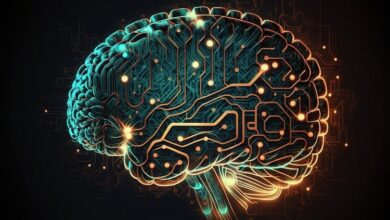What Will Happen When Central Banks Master Artificial Intelligence ?

WASHINGTON, DC – DECEMBER 14: U.S. Treasury Secretary Janet Yellen, flanked by U.S. Securities and … [+]
When central banks fall down, they often call other central bankers to help out. The Riksbank asked Mervyn King, governor of the Bank of England up to 2013, to examine its forecasting ability over the course of the 2010’. More recently, the Bank of England whose own forecasting went askance (nothing to do with the practices instilled by Mervyn King of course), asked former Fed chair and Princeton professor Ben Bernanke to cast an eye over its methods.
Bernanke delivered his report a year ago, where his broad conclusion was that central banks in general had performed poorly at macroeconomic forecasting, chiefly because of the series of large global shocks the world has experienced (and I would add the resulting ‘shock and awe’ response of central banks). In the specific case of the Bank of England, Bernanke painted an unflattering picture of a fusty institution where software systems are embarrassingly outdated, data sets are poor and staff resources are badly managed.
One clever solution to all this might simply be, in this age of AI, to ask ChatGPT to forecast growth and inflation. I did so, and it told me to ask the Bank of England.
In fact, central banks are already using what is popularly known as AI. Some central banks in emerging nations like Indonesia use it to scan the public reaction to their monetary policy, and many economists have been using machine learning and probabilistic models well before AI became popular. Indeed, there is growing thought leadership on the use of AI in central banking by bodies like the Bank for International Settlements (BIS).
In some fields, central banks use AI to help oversee the supervision of financial institutions. The ECB has launched the Athena project, which uses AI to help banking supervisors scan millions of documents, so as to help regulators spot anomalies. An extension of this focus is central bank monitoring of fintech firms who themselves use AI to allocate credit and investment strategies to individuals and households.
In the recent past I have referred to the growth of this segment of the banking industry, especially that over one third of ‘unicorn’ level companies in the UK are fintechs and many of these are involved in AI driven lending. This raises many challenges for supervisors, not simply the difficulty of grappling with new datasets (and their provenance) but also in terms of trying to understand the construction of the AI models that drive fintech services.
In the context of the finalisation of the EU AI Act this year, the use of AI in finance is one of the areas where central banks and supervisors have some catching up to do. Imagine when stock exchanges and certain institutions start to use quantum computing in trading and research.
To my knowledge, the use of AI in central banking seems to be grounded in the assumption that AI driven outcomes are produced to aid, but not replace, the economist/supervisor. I call this the ‘One Man and his Dog’ approach, where the human is assisted in a complex task by a clever, adaptive non-human actor (it used to be a dog but now it’s a computer). It would be a mistake for central bankers to take a more machine centric approach. However, a few obstacles remain.
To tally with Prof Bernanke’s verdict on the Bank of England, IT systems at central banks and data management capabilities are behind the best in the private sector, and the market for intellectual labour is in a bubble as far as AI relevant skillsets are concerned. As a result, language model technicians are unlikely to work in central banks – though my own experience is that today the best economists are also very good at modelling and also deploying AI models.
Data is perhaps the biggest hurdle. I came to economics and econometrics at a time when ‘proprietary data sets’ were hand input into excel spreadsheets from corporate accounts, or from clunky Datastream codes. Today the world is awash in datasets that help to explain the behaviour of households and companies – if central banks could be fed this data they would, potentially, be a lot wiser than they are now, though the risk is that they might become too data sensitive.
The temptation then for the next generation of central bankers will be to use the muscle that their supervisory powers give them to obtain high frequency glittering datasets from payment companies, buy now pay later start ups, and option pricing datapools from the institutions they oversee, and clean and analyse these for the benefit of monetary policy and fraud detection. Some central banks, such as the Bank of Canada are active here, but this trend is a developing one. These high frequency datasets can potentially be very interesting in reading economic shocks, and the response of economies to the monetary policy that follows shocks.
There are at least two more considerations.
First, relatively few economic commentators have drawn the link between central bank digital currencies and AI. Central bank digital currencies, if implemented, could generate huge datasets in the financial behaviour of households, which might then be better used to fine tune monetary policy. In an ideal monetary world, central banks would make small, high frequency and economy specific adjustments to policy through their digital currency frameworks (under this every household would have a bank account with the central bank), according to the AI driven models, with a goal of fulfilling their monetary objectives.
Second, central bankers, a fairly conservative though not unsophisticated lot, will have to learn to change their mindsets and communication techniques if they are going to deploy AI to their advantage. That might just be the biggest obstacle.



